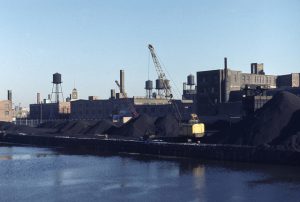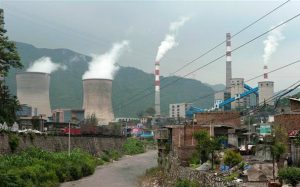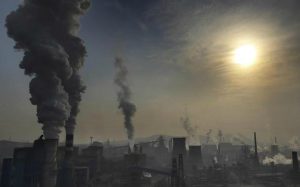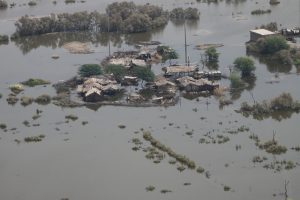Slowing economic growth and tougher environmental controls means China is unlikely to be the savior of the US coal industry, heaping further pressure on banks to withdraw lending to planned Pacific export terminals and existing mines.
In a move that will likely hearten environmentalists on either side of the Pacific, US mining companies look unlikely find major new export markets, meaning that more of the fossil fuel may stay in the ground as tighter regulations imposed by the White House and a shift to natural gas dent the fortunes of coal in the US, the world’s second biggest coal producing country.
While metallurgical coal exports could recover when China’s construction sector picks up speed, the prospects for thermal coal are more uncertain. “The numbers for thermal coal exports point to structural changes due to fundamental policy shifts in China,” said Tom Sanzillo from the Institute for Energy Economics and Financial Analysis, an organisation which aims to offer economic alternatives to fossil fuels.
China’s coal consumption fell 3% last year as a slowing economy, an increased share of renewables, shutdowns of surplus industrial capacity and curbs on smog took effect.
China’s targets on energy and carbon intensity, plans to cap coal use by 2020, a commitment to peak carbon emissions by 2030, and growing public disquiet about smog mean that opportunities for exports to China will dwindle in the longer term.
The likelihood that China will burn less imported coal means the future of three planned new export terminals on the Pacific Coast is increasingly in doubt, dashing hopes among US mining executives that the world’s largest energy consumer would give a new lease of life to old king coal.
In 2012, US producers shipped 3.2 million metric tonnes of steam coal to China through ports on the East Coast and the Gulf Coast, a high water mark that fell to half that amount in 2013.
China consumed around an estimated 3.9 billion tonnes of all types of coal in 2014, with 290 million tonnes of that coming from imports, underlining the importance of the Chinese market to exporting countries.
US coal exports are struggling for a number of reasons. Low natural gas prices have driven domestic prices to a six-year low. The global market is oversupplied and the strong dollar puts US exporters at a disadvantage compared with suppliers such as South Africa, Australia and Indonesia.
Surprise at scale of slowdown
Slowing Chinese demand has sent a further chill down the spine of cash-strapped US coal producers, who environmentalists blame for undermining the White House’s efforts to cut carbon emissions.
Analysts say they have been taken aback by the slowdown in Chinese coal demand.
“We always expected China’s growth in coal consumption to slow down, but we were surprised that it started slowing down so soon and so quickly,” said Andy Roberts, thermal coal analyst at Wood Mackenzie. “China is becoming less energy intensive, and the government has taken steps to decouple energy consumption from GDP growth.”
Whether or not China opts to import coal has tremendous impact on the global market. “Up to one quarter of the seaborne market depends on China,” Roberts said. Once Chinese coal demand starts to fall, there is no robust growth market for seaborne thermal coal anywhere, says research from analysts Bernstein.
If slowing demand for coal imports reduces output from US mines, that could also be good for US carbon emissions figures.
In 2012, methane emitted from US coal mining was around 1% of overall US greenhouse gas emissions, and the White House has committed to reducing the country’s methane emissions by 45%, although these cuts are likely to come from the oil and gas industry.
Legal battle
Faced with lower domestic demand, the US coal industry has been pushing for new terminals in Oregon and Washington, which would allow them to meet the expected rise in Asian consumption.
From the beginning, the port projects faced resistance from campaigners and native tribes. Developers have already cancelled three out of six terminals that were originally proposed – and the remaining three are highly controversial.
The dispute pitches coal-producing states against liberal West coast states with strong environmental interests. Wyoming and Montana are in the process of appealing a decision by regulators in Oregon to deny the permit for a coal terminal on the Columbia River to protect fishery interests. The Wyoming legislature just passed a bill allowing the state to issue up to US$1 billion in bonds to finance the construction of coal infrastructure projects beyond its own state borders.
Investors pull out
Slowing demand for coal has also made mines and infrastructure increasingly doubtful from an economic point of view. Last year Wall Street bank Goldman Sachs sold its shares of the Gateway Pacific terminal development in Washington State to a Mexican businessman. Towards the end of 2014, Australia’s Ambre Energy sold its North American subsidiary in charge of the other two projects to a private equity company.
“To me that looks like the shift to a highly speculative form of investment”, said Sanzillo who is the author of a study on overcapacities in US coal ports. In his view, the continued push by the coal industry for exports is a sign of desperation: “They need a place to ship their coal outside the US so they have to try it no matter how bad the outlook is.”
However, the longer-term outlook for coal might become brighter, meaning that plans for new US export terminals might have a better chance of being built after 2020, say analysts.
WoodMac’s Roberts says India will account for an increasing share of world coal demand and a growing potential market for US exporters, although shipping rates from the Pacific Coast to India would likely be higher than freight to China, given the longer distances involved.
“In the long term, Australia and South Africa won’t be able to meet all of Asia’s demand for coal,” he adds, meaning that US producers may persevere in their bid to supply coal-intensive countries with the fuel blamed most for climate change.







